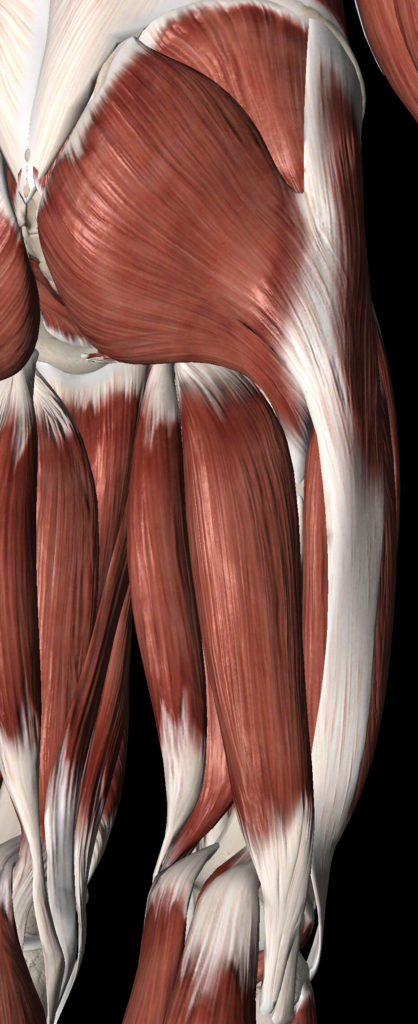Muscle strains are pretty common injuries in active populations. The risk of this injury actually increases as we age and become more sedentary.
In this text you will learn:
-
What is a muscle strain?
-
How to identify a muscle strain?
-
How to treat minor muscle strains?
-
How to return someone back from a muscle strain.
What is a muscle strain? It can be described as a force that is able to overcome the contractile ability of a muscle to “generate an opposing force” (Overcoming Gravity, pg 161). This results in a micro-tears throughout the muscle tissue and the athlete will experience a sensation of a “pulled muscle” or a sharp pain in the muscle belly itself. The area will be somewhat swollen due to inflammation, and tender to the touch. This can often occur towards the end of a workout when the body is fatigued and movement efficiency is compromised. The injury will always occur during the eccentric phase of a movement, which is often seen with the deceleration at the end range.
Common areas of injury: hamstrings, groin, lower back, quadriceps, biceps, triceps
As you can see, there can be many areas that are susceptible to injury. Muscle groups that have had a previous strain are more susceptible to others in the future secondary to reduced strength and endurance.
Examples:
“I feel like I have pulled a groin muscle when doing the last 5 burpees”
“I feel like I have pulled a hamstring muscle when sprinting”
“This muscle just got tight all of a sudden and is also sore after the last pullup” (points to bicep)
Level of Strains
Grade I- minor tearing of the muscle, with no bruising or swelling. Pain will be produced with only eccentric movements, and with some light pressure applied to the injury site
Grade II- partial tears of the muscle, with some bruising and swelling. Movement will be painful and have limited range of motion
Grade III is a complete rupture, with possible muscle gapping in the area. If this happens, get to the ER right away.
How to treat a muscle strain? Now this is only for the on the spot muscle strains such as grades I and II, anything more serious will require further evaluation by a doctor. This method is used for the first 0-48 hours after injury.
PRICEM
Protect the muscle. It is injured, and to keep it from further getting damaged, remove the athlete from the area. Avoid any painful movements or positions.
Rest the muscle. There is damage and it needs time to heal itself
Ice the area to prevent excessive inflammation. Some swelling is ok, but too much fluid in the area can actually impede the healing process. Icing will also reduce the pain and discomfort experienced by the athlete
Compress the area of injury with the use of mobility bands, compressive wraps etc. This will help protect the muscle from further injury, as well as prevent the inflammation from getting out of control. A compressive force to the muscle or an injured site also reduces pain and discomfort.
Elevate the injured site to further reduce the inflammation and help relieve some of the pain experienced by the athlete.
Movement is very important for the muscle. As the muscle begins to heal, the fibers of the muscle will unfortunately be layered haphazardly by the physiological system. As a result, if there is no movement or reintegration of the fibers into the area, then there will be a tightening and weakening of the new muscle. Pain free movement upon injury is very important to keep the blood flowing, but also to help maintain the proper layout of fibers as healing progresses. Stretching is not indicated at this time because stretching against resistance was the cause of the problem
Massage can also be used in the areas above and below the site of injury. These areas can often get tight and can further prevent the full healing process. Very gentle massage can also be used on the site of injury, with the use of the hands, while pushing the swelling towards the heart. Avoid deep pressure massage for now as for it can further stimulate an inflammatory process.
After the first 48-96 hours, the pain should have subsided, swelling should have decreased, and movement should have improved. During this time, you can implement very light stretching into pain free ranges to restore flexibility and help realign the scar tissue that was formed during the first couple hours of injury. Make sure that the muscles are warmed up via active movements without resistance, excessive speed, or drastic changes in position.
Return to sport
Light exercise can be applied once pain has subsided with higher repetitions to muscle fatigue and not a further strain. This can be initiated after 72-96 hours upon injury. Progress to isometrics and then increase the intensity gradually. No pain or twinges should be experienced. To help rebuild the muscle and increase the resistance to injury, begin to implement more eccentric exercises to develop control, endurance, and strength.
To objectify the progress of the athlete upon returning to the field or gym, use this recovery protocol, and increase/decrease progressions as needed depending on the athlete.
Week 1: 40-50% of personal maximal intensity, focus on lower weight and higher repetitions of the injured area. Can continue to work on other body parts if the injured area is not involved
Week 2: 50-60% of personal maximal intensity, can increase weights, introduce isometrics. Continue to work on other body parts if the injured area is not involved
Week 3: 60-70% of personal maximal intensity, can increase weights or resistance, and reintroduce eccentrics.
Week 4: 70-80% of personal maximal intensity, increase weights and increase speed of movement.
Week 5: 80-90% of personal maximal intensity, increase weights and speed of movements, incorporate more explosive movements at lower loads
Week 6: 90-100+% return to normal movement and exercise.
The above protocol will be used in the future to intelligently help those with an injury, rather than just saying, gradually get back into it.
Muscle strains and injuries can be quite cumbersome, but with increased intensity to facilitate change, the risk is present. This text is used as a helpful tool to help you or someone you know who’s experienced a muscle strain and is dying to get back to working out.
Feel free to share this with someone who needs to read this!
Need help getting back into a fitness routine after an injury? Book your free no sweat intro phone call at this link. During this meeting, we will discuss your background, goals, past injuries and identify the best plan of action for you.
Any questions? Reply to this message.
Ashley
*The owner will not be liable for any errors or omissions in the information provided nor will the owner be liable for any accidents, injuries or other damage, howsoever occurring to any person or property arising out of or in any way connected to the use or application of information obtained from this text.


